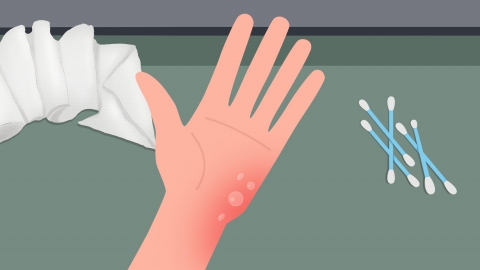What should I do if I get scalded by hot oil?
Generally, after a grease burn, the correct treatment methods mainly include immediately moving away from the heat source, cooling the affected area with cold water, avoiding applying any substances randomly, protecting the wound from damage, and seeking medical attention promptly if the condition is severe. A detailed explanation is as follows:

1. Immediately move away from the heat source: After a grease burn, the first step is to quickly move away from the source of hot oil, preventing other parts of the body from coming into contact with the high-temperature grease again. Remove any contaminated clothing as soon as possible. If clothing adheres to the skin, do not forcibly pull it off; leave the adhered portion temporarily to avoid worsening skin damage.
2. Cool the burn with cold water: Place the burned area under a stream of cool running water continuously, or apply a cold towel or ice pack to the area for cold compressions, maintaining this for 15-20 minutes. Cold water can quickly remove heat from the skin surface, reduce burning of deeper tissues, alleviate pain, and decrease the likelihood of blister formation.
3. Avoid applying random substances: Do not apply toothpaste, soy sauce, sesame oil, or other substances to the burned area. These substances do not provide therapeutic benefits, may block skin pores, hinder heat dissipation and wound aeration, increase the risk of infection, and interfere with the doctor's assessment of the wound.
4. Protect the wound from damage: If blisters form after the burn and they are small and unbroken, do not puncture them yourself. The blister skin can protect the wound from external contamination. Gently cover the wound with clean sterile gauze, avoiding friction or pressure on the blister to prevent rupture and subsequent infection.
5. Seek medical attention promptly if severe: If the burn is extensive, located on special areas such as the face, eyes, or joints, or if symptoms such as ruptured blisters, wound redness and swelling, pus discharge, or intense pain occur, promptly visit the burn department of a hospital, where professional doctors can perform proper wound cleaning, disinfection, dressing, and other treatments.
During daily cooking, it is recommended to wear long-sleeved clothing and an apron, use heat-resistant kitchen tools, and take protective measures in advance to reduce the risk of grease burns. Stay focused while handling hot oil to avoid accidents caused by distractions.




